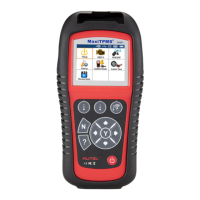3
2 General Information
TPMS system review
A tire pressure monitoring system (TPMS) is an electronic system designed
to monitor the air pressure inside the pneumatic tires on various types of
vehicles. TPMS report real-time tire-pressure information to the driver of the
vehicle, either via a gauge, a pictogram display, or a simple low-pressure
warning light. TPMS can be divided into two different types – direct (dTPMS)
and indirect (iTPMS). TPMS are provided both at an OEM (factory) level as
well as an aftermarket solution.
TPMS Legislation
In the United States, the United States Department of Transportation
(NHTSA) released the FMVSS No. 138, which requires an installation of a
Tire Pressure Monitoring System to all new passenger cars, multipurpose
passenger vehicles, trucks, and buses that have a gross vehicle weight
rating (GVWR) of 4,536 kg (10,000 lbs.) or less, except those vehicles with
dual wheels on an axle, as of 2007. In the European Union, starting
November 1, 2012, all new models of passenger cars must be equipped
with a TPMS, with even tighter specifications that will be defined by the
UNECE Vehicle Regulations (Regulation No. 64). From November 1, 2014,
all new passenger cars sold in the European Union must be equipped with
TPMS. On July 13, 2010, the South Korean Ministry of Land, Transport and
Maritime Affairs announced a pending partial-revision to the Korea Motor
Vehicle Safety Standards (KMVSS), specifying that “TPMS shall be
installed to passenger vehicles and vehicles of GVW 3.5 tons or less, ...
[effective] on January 1, 2013 for new models and on June 30, 2014 for
existing models”. Japan is expected to adopt European Union legislation
approximately one year after European Union implementation. Further
countries to make TPMS mandatory include Russia, Indonesia, the
Philippines, Israel, Malaysia and Turkey.

